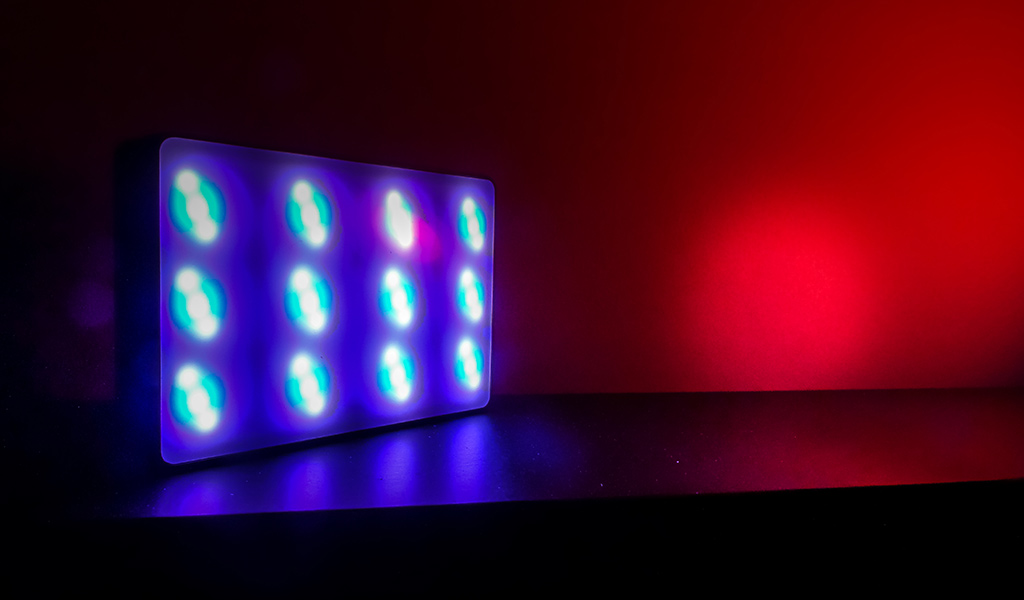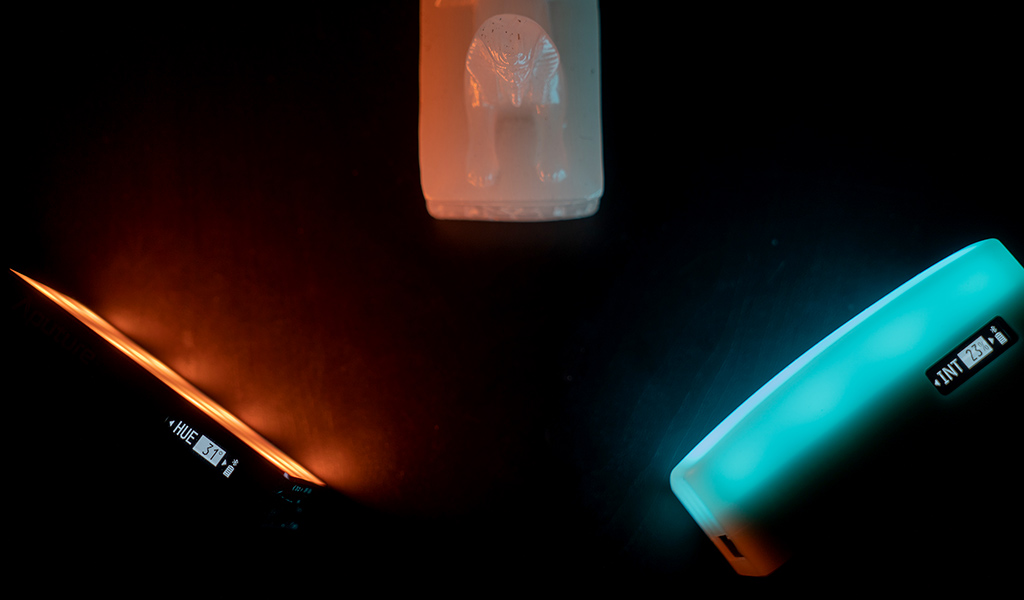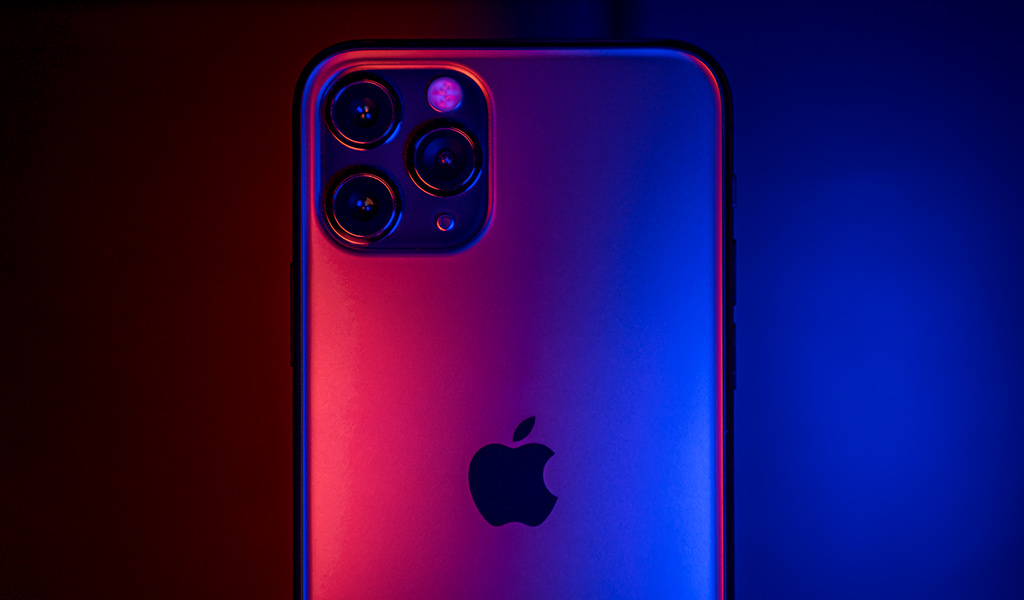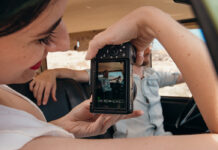
LEDs are big in photography these days, but how well do Aputure’s portable lights fare when using them to take photos and record video? Good things can come in small packages, and there are real use cases for the AL-M9 LED Fill Light and MC RGBWW Film Light.
These are two different products that don’t necessarily serve the same function. However, they certainly could complement each other if you deploy them the right way. They are portable enough to take with you anywhere, and rechargeable batteries let them work wirelessly. You even get app support with the Film Light.
Aputure AL-M9 design
For starters, the AL-M9 weighs only 140 grams (with the adapter), so it’s a lightweight design. Not to mention small because its dimensions are about the same as a debit or credit card. Stack about eight of them together and you would get the same depth. There’s an array of nine LEDs lined up in a grid on the front, with four magnets on the corners to clamp on the included plastic diffuser.
On the side, you have a power button, micro-USB port to charge the battery, along with buttons to increase or decrease the brightness. There are nine levels of brightness to work with, and the spread is about 120-degrees wide, so despite its smaller size, it does cast pretty wide.

Unlike the MC RGBWW, this is a static daylight LED that sticks to a neutral 5500 Kelvins colour temperature. The only way to adjust that is to use the diffusion filter gels that Aputure includes in the box. Slip it over the LEDs, attach the plastic diffuser and you can go warmer with the amber gel, or cooler with the blue gel. The wax-like paper that goes with them is actually a filter as well, which you can use to soften the light further.
The included mount adapter allows the light to mount onto a camera either through a cold shoe or on anything with a screw mount. That adds some flexibility in how and where you angle it, particularly if you wanted to use a selfie stick, tripod, or some other accessory.

Aputure MC RGBWW design
Aputure built the MC RGBWW to be a versatile LED light with plenty of convenience thrown in. It’s a little bigger than the M9, about a quarter thicker, and weighing in at 130 grams without the silicone diffuser attached. But there’s also a lot more going on here.
There are 12 LEDs behind a built-in diffuser panel. On the top is a small LED screen to show settings and menus. On the side is the on/off switch, a USB-C port, along with a dial that also doubles as a button. The bottom has a standard screw indent to mount on any standard tripod, stick or mount that can attach to it. And finally, the back has two strong magnets to attach to any magnetic surface.
Inside, the light is Bluetooth-enabled, letting you pair with an iOS or Android device to work with Aputure’s Sidus Link app. This part is important because the light is capable of hitting up to 95% of the BT2020 colour gamut. That’s basically millions of colours, giving you full wireless control over what the lights emit.
The colour temperature is between 3200-6500 Kelvins, so you could emulate cool, warm, tungsten, daylight, and on and on. Colours are also really varied because you can adjust hue, saturation and intensity separately. The app also includes an FX mode of nine effects, including police lights, fire, paparazzi, lightning and more. It even works with the phone’s camera to use the colour picker to switch the light to whichever colour you sample.
That makes the MC RGBWW more dynamic than the M9 because it can dim and brighten on its own, depending on the mode you choose. And while the M9 has nine levels of brightness, the RGBWW goes from 0-100% in intensity.

Using the M9 light
Unlike the M9, the MC RGBWW doesn’t come with a mount. If you want to use a cold shoe, you will need to get an adapter to mount it, though it does have the opening to attach onto any mount with a screw. Despite that, there’s real versatility here, though I would argue the two lights serve different purposes.
Aputure positions the M9 as a key light, meaning the primary light source for photos or video. I would caution that’s only true if you’re working at a certain distance. As bright as the light is, the company puts its range at just under two feet with 350lux output. That’s good for vlogging, but hardly good enough if you want it to flood a whole room. Its overall brightness is somewhat deceiving because it can be too bright at short distances, washing out lighter skin tones, though you can find the right balance at the right distance by adjusting brightness.
Given its small size, you could always get more than one to balance light out and increase overall output. I found it really useful for product photography, but is certainly usable for people, too. The thing about the magnetic plastic diffuser is that you could also slip in gels in different colours. If you don’t like how the included ones look, get some others and try those out.
That makes the light more versatile than it looks because there’s a remedy for its lack of built-in colour. But even if you’re just looking for a warmer or cooler tone for your video, vlog or photo, you have options. You also don’t have to always attach it to a camera. It’s small enough to hold in your hand and position however you like to get the shot you want.

Using the MC RGBWW light
This is the kind of light that inspires creativity. Not just because you have such a massive colour gamut to work with, but also because it’s easy to position where you want. I actually own two of them to combine colours and intensities, and am still learning what I can do with them.
Rather than a key light, I see the MC RGBWW as an accent light, especially for product shots. But you can also get creative by using them for cool portraits. That’s the thing about colour—you’re more willing to try stuff with it. Since the light has different settings, Aputure’s Sidus Link app proves really helpful for managing things. Use the colour wheel to select what you want, adjust the hue, and either saturate or desaturate it.
The included silicone diffuser is one of the real highlights of this light because it softens the effect beautifully. That lets you increase intensity and saturation a little more and avoid harsher light. I also experimented with all kinds of materials to act as makeshift diffusers. Bubble wrap, various types of paper, a pillowcase—basically anything with some transparency or translucency.
If you were to use it for videos of yourself, you could place it behind you to add some ambient light, while the M9 illuminates you with neutral daylight. Chances are, you will have to go through some trial and error to find the right mix, but it is doable. Again, neither of these lights will replace a proper studio light, but they’re definitely adaptable in closer confines.

Battery life and portability
The Sidus Link app can control up to 100 MC RGBWW lights at once when set up as a mesh system. Whether you have one or many, each one should last about two hours at max brightness. Meanwhile, the M9 can go up to 1.5 hours until it needs to recharge.
The MC RGBWW has an advantage here—not just because it uses USB-C—because it also does wireless charging. If you have a Qi charging pad, lay the light down and it will charge, albeit more slowly than plugging in. If you have a portable battery charger, you can also keep the lights going for longer when out in the field. The Sidus Link app keeps track of the RGBWW’s battery life, so you’re always aware of where it stands.
Each of the lights come with their own carrying cases. They are different, yet follow some similar principles. There is a slit in the back to run through a belt, so you can wear it on you, or use the carabiner to hook up to a bag or strap.
Final thoughts
I’ve barely scratched the surface of what the Sidus Link app alone offers for the MC RGBWW, which is a really extensive set of features. It transforms the sheer depth of what the light can do, and is well worth exploring to inspire your creativity. I’ve had a lot of fun playing around with the two I have myself. You may not understand all the terms and features right away, but learn them and you will get even more out of it.
The M9 is less versatile, but serves a straightforward purpose. When you need a light to help keep you lit, especially in the field, it can do the job. Just don’t look at it as a substitute for proper studio lighting. Keep it handy, so long as you recognize its limitations.
The Aputure AL-M9 LED Fill Light and MC RGBWW Film Light are available now.



